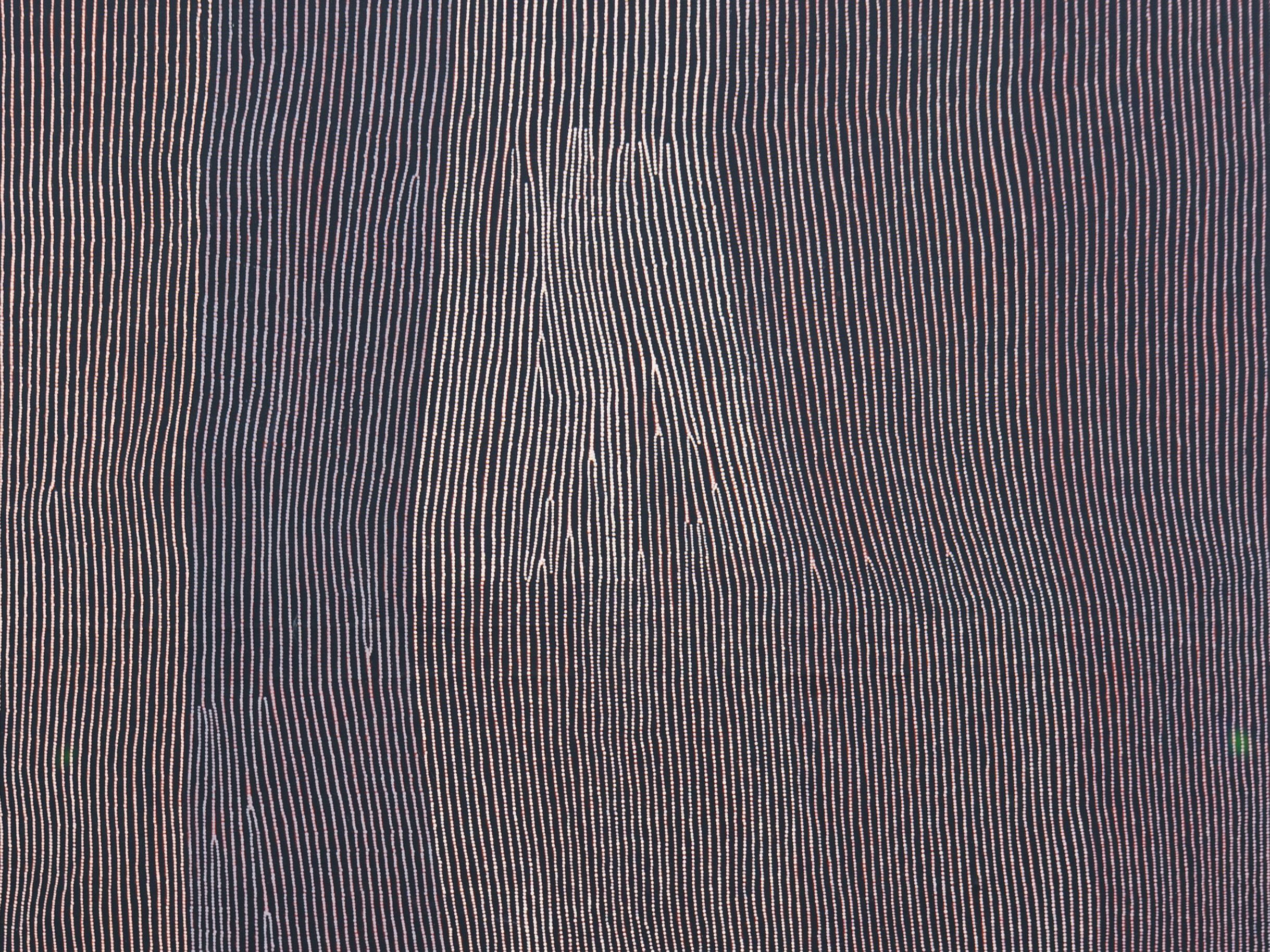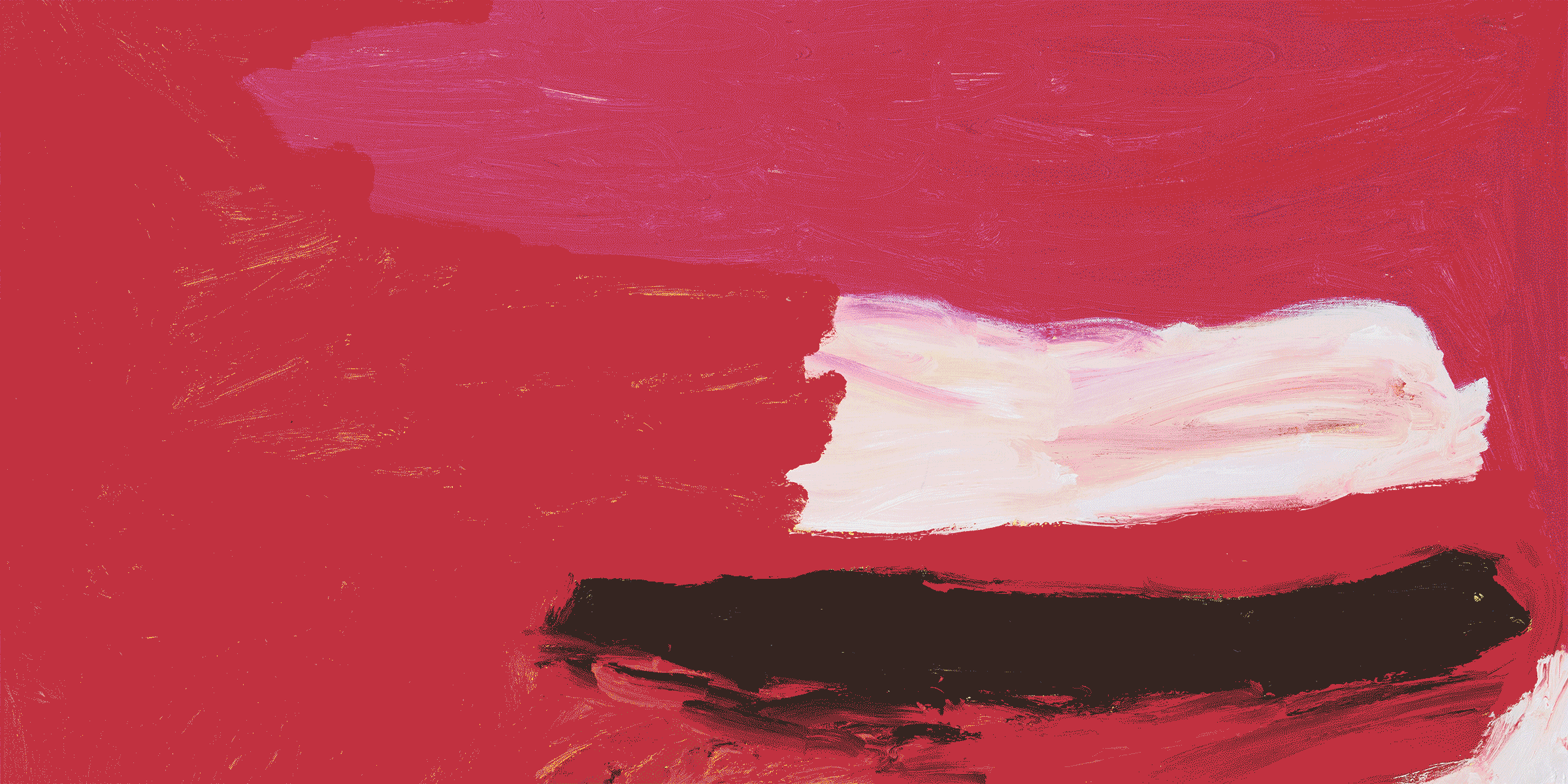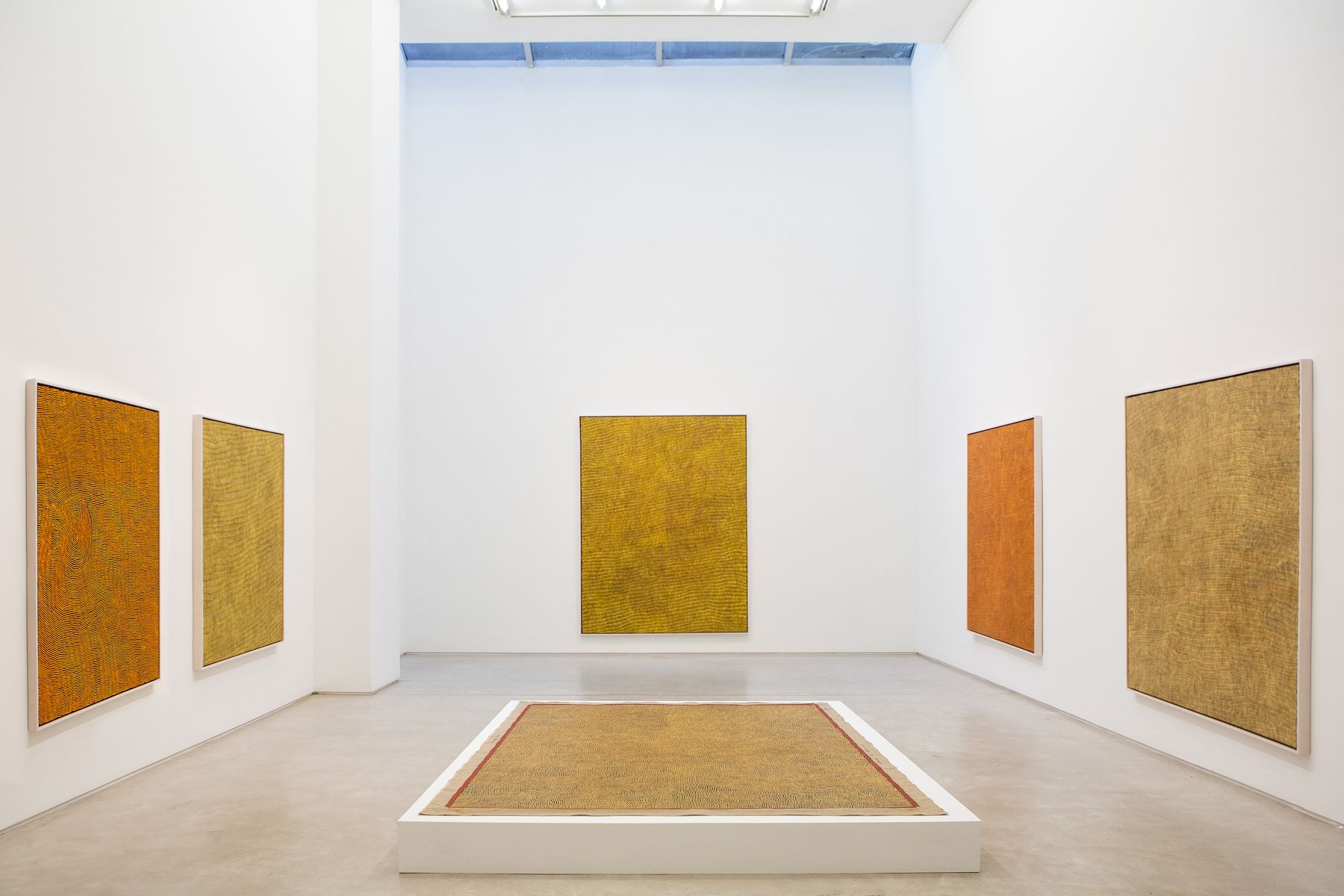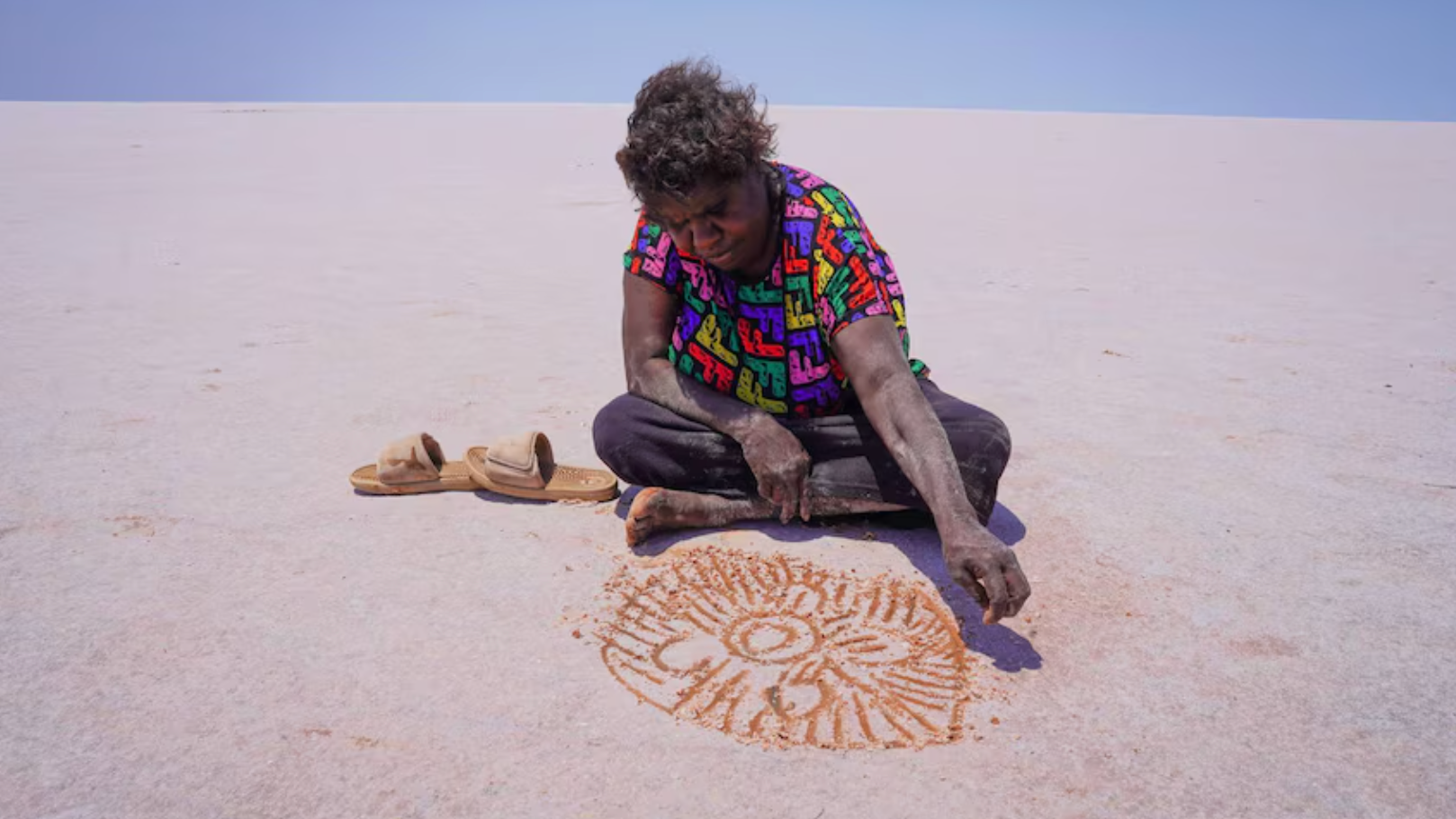
Yukultji Napangati
Born c. 1971, Wilkinkarra (Lake Mackay), Western Australia; Lives and works Kiwirrkura, Western Australia
"Hypnotic and visceral, Yukultji Napangati's abstract landscapes are a meditation on the way surface relates to body and time." — The Brooklyn Rail, 2019
Artwork
Exhibitions

Mantua Nangala & Yukultji Napangati

Desert + Coast: Seven Elder Aboriginal Painters

Yukultji Napangati
Biography

Yukultji Napangati was born at the sacred site Marrapinti, a significant women’s ceremonial site where, during ancestral times, a large group of women camped to perform ceremony before continuing their travels to the east. Yukultji grew up living a seminomadic lifestyle in the bush until 1984, when at the age of fourteen, she and her family group were sighted by settler Australians and reunited with Pintupi kin at the newly established community of Kiwirrkura. Reflecting on her childhood, Napangati has said:
"When I was young, I would play on the sand dune and when we saw the old people returning to camp we would go back and see what food they had brought with them. After we ate, we'd go to sleep. No blanket, we would sleep on the ground…Then we would go to another waterhole and make another camp."
Napangati began painting for Papunya Tula Artists in 1996, as part of a growing cohort of groundbreaking Pintupi women, 25 years on from the founding of Papunya Tula Artists. Napangati’s singular approach to mark-making utilizes a repeated pattern of interconnected lines and dots that consume her canvases and generate the illusion of movement. This illusory shimmer inherent to Napangati’s work reflects the rippling tali (sand dunes) of her homelands, deep in the Gibson Desert north of Kiwirrkura, near the great salt lake Wilkinkarra (Lake Mackay), Western Australia.
Napangati uses acrylic paint rather than natural ochers throughout her work. Minimalist in palette and formally abstract, her works are informed by her matrilineal Tjukurrpa—ancestral knowledge, narratives, and histories—passed down from her mother and mother’s mother. Her approach involves intense, refined two-toned mark-making that colonizes the canvas, creating dotted, linear formations specifically related to her mother’s Country, Marrapinti. As is customary, she often paints this site alongside her sister and fellow Papunya Tula artist, Yalti Napangati.
Napangati’s work has been exhibited extensively both in Australia and internationally. Notable exhibitions include her solo exhibitions, Yukultji Napangati: Shimmer (2020), Utopia Art Sydney, NSW, (Australia), and Yukultji Napangati (2019), Salon 94, New York, (USA); and inclusion in the group exhibitions Desert + Coast: Seven Elder Aboriginal Painters, Salon 94, New York, (USA); Ever Present: First Peoples Art of Australia, National Gallery of Australia, Parkes, ACT, AU – which traveled to the Art Gallery of Western Australia, WA, AU; the National Gallery Singapore; the Auckland Art Gallery Toi o Tāmaki, NZ (2022-23); and the landmark exhibition Marking the Infinite: Contemporary Women Artists from Aboriginal Australia (2016–19), presented at Newcomb Art Museum, Tulane University, New Orleans; Patricia & Phillip Frost Art Museum, Florida International University, Miami; Nevada Museum of Art, Reno; The Phillips Collection, Washington DC (all USA); the Museum of Anthropology, University of British Columbia, Vancouver (Canada); and Desert Painters of Australia (2019–20), Gagosian, Hong Kong, (China), New York and Los Angeles (both USA).
In 2018, Napangati was awarded the esteemed Wynne Prize by the Art Gallery of New South Wales, Gadigal/Sydney (Australia). Her work is held in numerous private and public collections nationally and internationally, including the Harvard Art Museum, Cambridge (USA); Hood Museum of Art, Dartmouth College, Hanover (USA); Metropolitan Museum of Art, New York (USA); Milwaukee Art Museum, Wisconsin (USA); and Toledo Museum of Art, Ohio (USA).
Press
The Brooklyn Rail
Artasiapacific
The New York Times
The Sydney Morning Herald